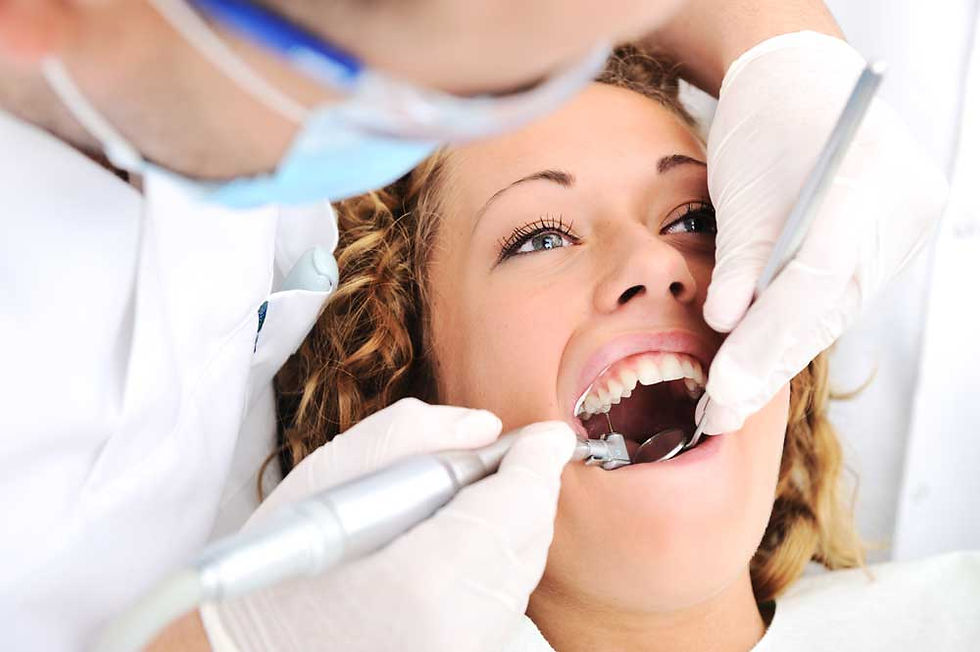Everything You Should Know About Gum Grafting Is Provided Here
- Laticia Gibson
- Feb 8, 2024
- 3 min read

Maintaining dental health goes beyond treating cavities and tooth decay, straightening crooked or impacted teeth, and replacing missing teeth. The state, look, and risk of infection and inflammation of the gums are all essential aspects of oral health that are frequently disregarded. When together, these maintain gorgeous, healthy smiles.
Take Care of Your Dental Health
Gum recession is one of the most typical consequences of periodontal disease. Usually, very vigorous brushing, previous orthodontic treatment, and thinner gum tissue cause gums to recede.
A history of gum disease and gingivitis brought on by germs and inflammation from inadequate hygiene is a more serious reason for concern. These negative consequences can be reversed, and your gums can be healthy again with a gum transplant. The appropriate grafting technique, planning, and recovery are essential to the outcome of your gum graft surgery in houston; these can all be achieved with the help of a skilled periodontist.
What is a transplant of gums?
One dental operation that a periodontist (a gum specialist) does is gum grafting. The suggested course of therapy for receding gums is to keep the tooth root surface covered, as this can cause irritation and decay.
During gum grafting, a segment of healthy gum tissue or the roof of the mouth is harvested. The area where the gum tissue has receded is where this component is grafted or joined.
What kind of gum graft am I in need of?
Different gum grafting methods are intended to treat different periodontal issues. In every gum transplant, donor tissue from another area of the mouth is taken and attached to the area where the gums have receded. What's different are the methods used and the anticipated healing outcomes.
Graft of connective tissue
To do gum grafting utilizing connective tissue, a little flap in the roof of your mouth—also referred to as a "trap door"—must be opened. Afterwards, your orthodontics in houston will utilize this trap door to locate, cut out, and sew a piece of connective tissue to the area where your gums have receded.
Gratuitous gingival graft
A free gingival transplant, as opposed to the "trap door" method, also involves removing a tiny amount of tissue from the roof of your mouth. The tissue used is grafted onto the area that requires more gum tissue due to weakening. However, it is still the top layer of the palate.
Pedicle Grafting
A tissue taken closer to the recession site is grafted using a flap in a pedicle graft. Covering the retreating gum tissue with a flap allows the affected area's tissue to be utilized locally instead of being taken from another portion of the mouth, such as the roof.
Periodontists observe that pedicle dental bone grafting is frequently the most effective procedure because it preserves blood supply to the affected tissues.
Substitute grafts
Although it's not always feasible, your healthy tissue is often used for gum grafting. An alternate graft could be suggested in extreme situations where a significant portion of the gums have receded or if your periodontist has to cover the gum area of up to five teeth.
Risks Associated with Gum Graft Surgery
Gum grafting is a very safe and effective operation that has been studied and shown to be successful in treating many types of gum disease and intense brushing-related receding and thinned gums. Issues and infections could arise, particularly in the absence of adequate post-operative care.
Contact your dentists in houston as soon as possible for sudden or seeping bleeding around the graft site, swelling, bruises, fever, and pus. These suggest that the graft needs to be redone since it did not correctly take root or adapt to the spot.
Conclusion
Gum grafting won't make previously receding gums appear better overnight. The graft will adjust to the area over a few weeks as the swelling worsens and the wound heals. Observing the entire advantages or the gums' repaired appearance will take a few more weeks. The best dentist in houston texas, can talk to you about your treatment options.


Comments